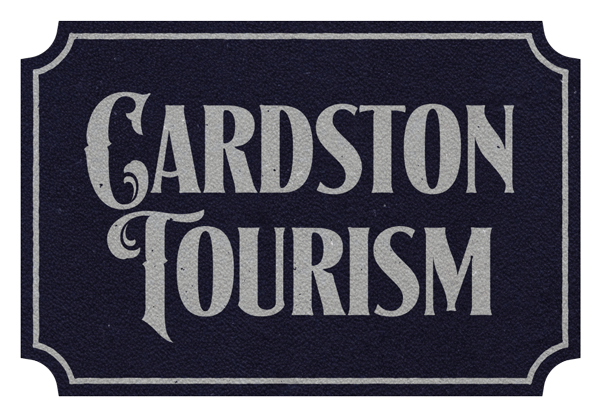UNESCO Sites Within a Short Drive of Cardston County
By Madeleine Vanden Berg
Alberta is home to six UNESCO World Heritage Sites, and Cardston Country is within a short driving distance of three: Waterton-Glacier International Peace Park, Writing-on-Stone Provincial Park, and Head-Smashed-In Buffalo Jump. Sites are given this designation based on their cultural and natural value and their importance for understanding humanity. Growing up in the neighbouring County of Warner, I had the opportunity to visit each of these sites countless times and was able to share my experiences working with Travel Alberta in Milk River and West Glacier, Montana.
Head-Smashed-In Buffalo Jump
Estipah-skikikini-kots, or Head-Smashed-In, is a buffalo jump nestled in the Porcupine Hills that Indigenous peoples used for over 5000 years as an efficient and effective means of harvesting bison and was granted UNESCO designation in 1981.
Blackfoot were nomadic and would dictate their movements based on the seasonal migration of bison. Bison drives would occur in the fall to prepare for the coming winter. Blackfoot would guide herds of bison from grazing areas to driving lanes, where buffalo runners dressed as coyotes and wolves would guide them to the edge of the cliff to be driven over the 11-metre drop. As the bison were harvested, there would be zero waste as the Blackfoot would use virtually every part of the bison to honour its sacrifice. The name of the jump comes from the legend that a young Blackfoot wanted to watch the bison driven from under the bluffs but became crushed by the falling animals and was later found with his head crushed.
Extensive and ongoing archaeological research has uncovered marvels of a bygone era. A transition in tools from rudimentary to advanced can be seen as levels of the earth are uncovered, and bone deposits in some areas reach as far as 10 metres deep. Some artifacts discovered at the cliffs and displayed in the centre include arrowheads, dart tips, spearheads, and stone knives.
The Interpretive Centre at the site opened its doors in 1987 and was built into the side of the sandstone hills just west of the buffalo jump itself. The Interpretive Centre is five levels and tells the distinct story of the site and Blackfoot culture as you start from the viewpoint of the jump above and descend to the main floor.
Waterton-Glacier International Peace Park
Paahtómahksikimi (the Sacred Lake within the Mountains), or Waterton, is on the traditional lands of the Niitsitapi (Blackfoot) and earned its national park designation in 1895. The first International Peace Park was formed in 1932 with the union of Waterton and Glacier National Park across the shared Upper Waterton Lake in Montana. Glacial movement shaped the distinct landscape of the parks and still feeds the waters of many of the lakes on both sides of the border.
The partnership and comradery between parks can be seen in the Shoreline Lake Cruise on the Upper Waterton Lake that starts in Alberta and dips into Montana and the interpretive International Peace Park Hike led by one Canadian and one American park ranger along the Upper Waterton Lake. The parks also share a Dark Sky Park designation through their efforts to actively reduce light pollution within the park boundaries resulting in stunning unfiltered views of the cosmos.
As a result of the devastating Kenow fire in Waterton in 2017, a brand-new state-of-the-art visitor centre is now open and filled to the brim with interpretive materials and knowledgeable staff.
Writing-on-Stone Provincial Park
Aisinai’pi (it is pictured/written), or Writing-on-Stone, is one of the highest concentrations of rock art on the Northern American great plains. It was designated as a provincial park in 1975 to help protect and preserve the Indigenous art and sacred land. The unique landscape was formed through glacial meltwater, ice, and wind and is believed to have been inhabited by Indigenous peoples dating back 9000 years.
Aisinai’pi served as a sacred site to many Indigenous peoples who believed that the land was home to powerful spirits that were then captured in rock art on the soft sandstone hoodoos that fill the coulee along the Milk River. As the colonization headed west, the contents of the rock art reflected the transition, and firearms can be seen in the “Battle Scene” petroglyph.
Hike the Hoodoo Trail to immerse yourself in the hoodoos and the art along the way, or float the Milk River and look up to the steep cliff faces home to hundreds of cliff swallows.
Venture beyond the county lines to experience some of Alberta’s cultural marvels!
MADELEINE VANDEN BERG was born and raised in Southern Alberta and got her start in the tourism industry working for Travel Alberta in Milk River and West Glacier. Leaving the Prairies behind, she moved to Banff to pursue a career with Parks Canada. Madeleine earned her Bachelor of Arts degree in kinesiology and anthropology from the University of Lethbridge.
